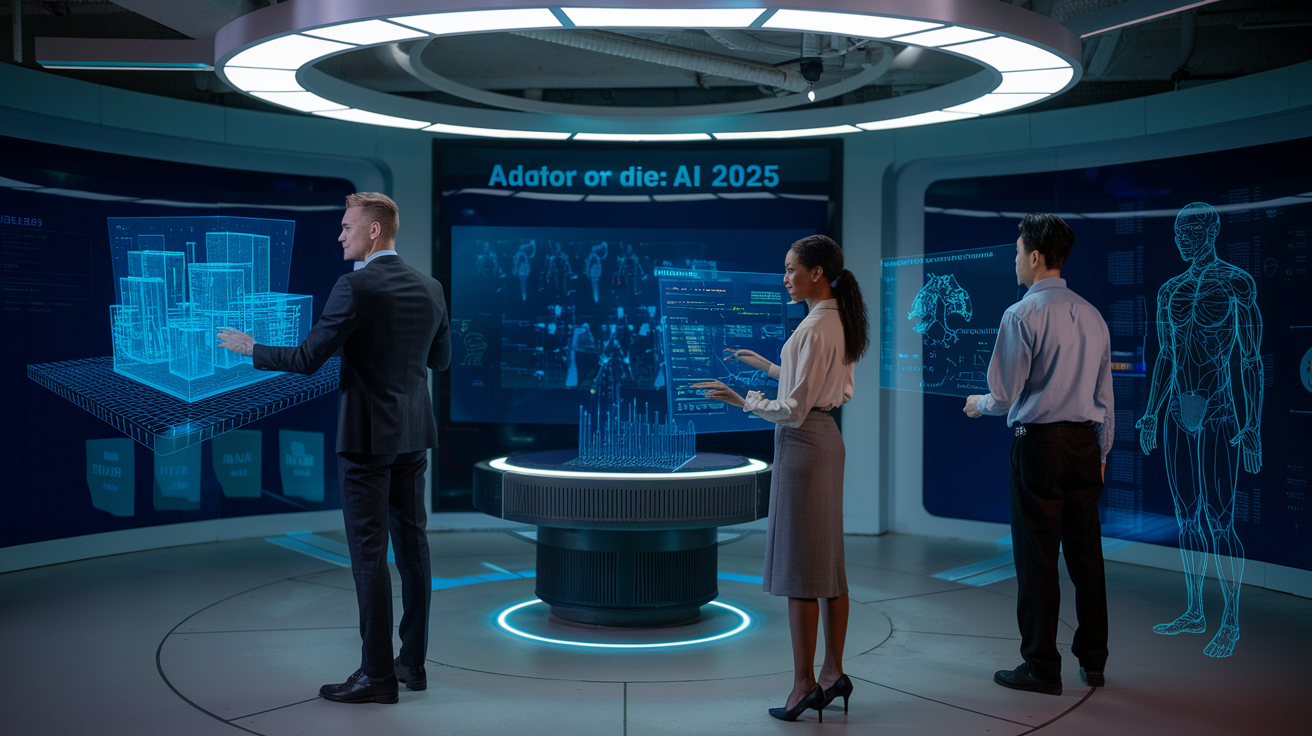I was reading tech news from my home office when a cold truth hit me that AI exists right now and its development pace exceeds human eye movement. The upcoming year 2025 will bring artificial intelligence to the same level of normalcy as smartphones currently enjoy. The harsh reality which keeps me awake at night reveals that survival depends on adaptation. The signs of change are clear for everyone to see. 🖊️
Artificial intelligence transforms business operations while transforming professional duties and transforming our daily routines and professional environments. Survival in a world of rapid machine intelligence development has become essential because machines now operate at speeds beyond human capabilities.
The real question is not if AI will affect your life but how profoundly it will reshape all your current understanding. This blog post guides readers through the AI revolution that will reach explosive growth by 2025. The article will show you how to grow personally and professionally in this new era while examining AI’s business transformation effects and addressing adoption obstacles directly.
This article will provide my analysis of how humans can preserve their unique capabilities against the growing dominance of artificial intelligence. Buckle up—it’s time to face the future and ensure we’re not left behind. 🚀
The AI Revolution: Understanding the 2025 Landscape
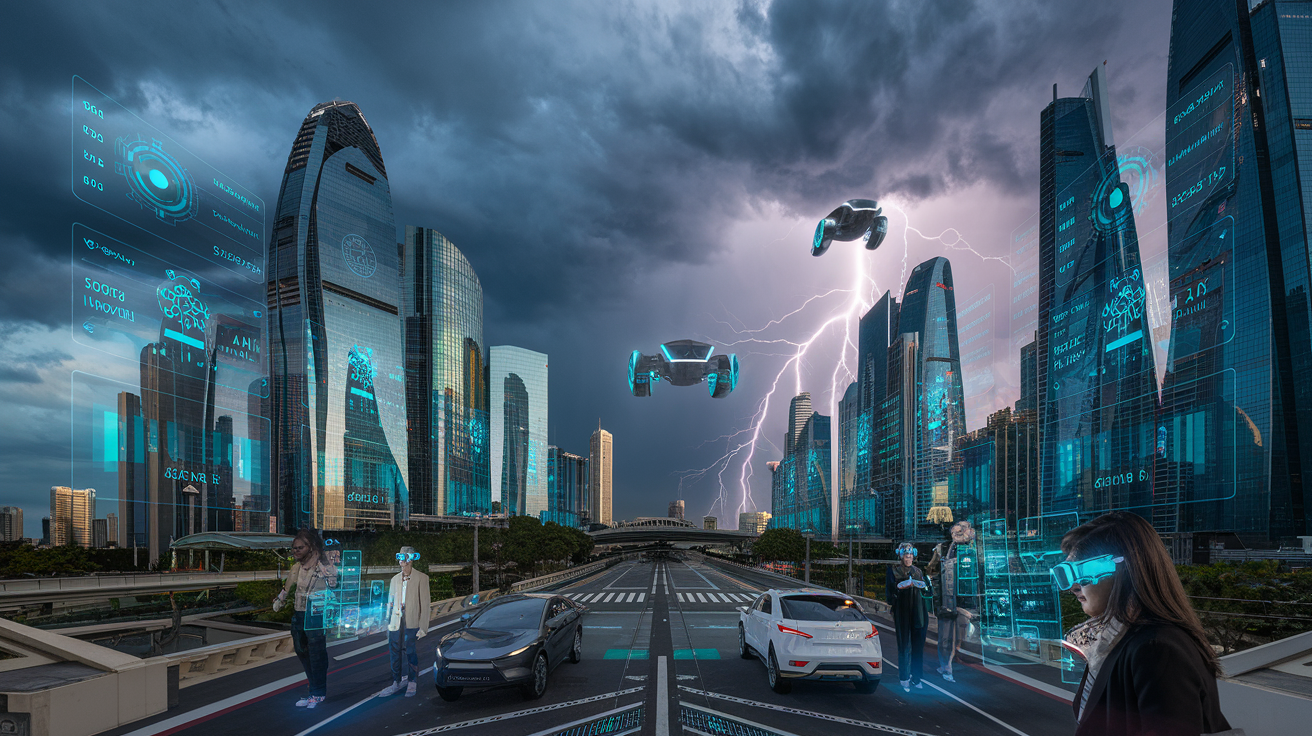
Key AI technologies dominating industries
The future of 2025 reveals an AI-dominated environment which features multiple transformative technologies. The evolution of machine learning and deep learning persists but advanced natural language processing (NLP) and computer vision technologies have emerged to revolutionize industries. The following AI technologies will lead different sectors according to my analysis:
- Natural Language Processing (NLP)
- Computer Vision
- Reinforcement Learning
- Generative AI
- Edge AI
| Technology | Primary Industries | Key Applications |
|---|---|---|
| NLP | Healthcare, Finance | Medical diagnosis, fraud detection |
| Computer Vision | Manufacturing, Retail | Quality control, inventory management |
| Reinforcement Learning | Robotics, Gaming | Autonomous systems, strategic decision-making |
| Generative AI | Creative, Marketing | Content creation, personalized advertising |
| Edge AI | IoT, Telecommunications | Real-time data processing, smart devices |
AI’s impact on job markets and workforce dynamics
The AI revolution transforms the job market into new patterns which I never predicted during the previous years. The job market experiences both job automation and the development of fresh positions as well as changes to existing roles.
AI affects the workforce through the following changes I have noticed: Skill shift: All industries now require AI-related skills at an increasing rate. Job polarization: The number of middle-skill jobs decreases while high-skill positions and specific low-skill jobs experience growth. Lifelong learning: The ability to continuously learn new skills has become vital for staying relevant. Human-AI collaboration: The majority of positions now require employees to work jointly with AI systems.
Global AI adoption rates and trends
As I analyze global AI adoption, I’m noticing significant variations across regions and industries. While some countries are racing ahead, others are playing catch-up. Here’s a snapshot of what I’m seeing:
| Region | Adoption Rate | Key Drivers |
|---|---|---|
| North America | High | Tech giants, VC funding |
| Europe | Medium-High | Regulatory framework, research initiatives |
| Asia-Pacific | High | Government support, large-scale implementations |
| Latin America | Medium | Growing startup ecosystem |
| Africa | Low-Medium | Mobile-first innovations |
The trends I am observing include a greater emphasis on ethical AI, rising investment in AI infrastructure, and a movement toward more explainable AI systems. I believe that as we move toward an AI-driven future, it will be important to understand these landscapes for both individuals and organizations to succeed.
Embracing AI: Strategies for Personal and Professional Growth
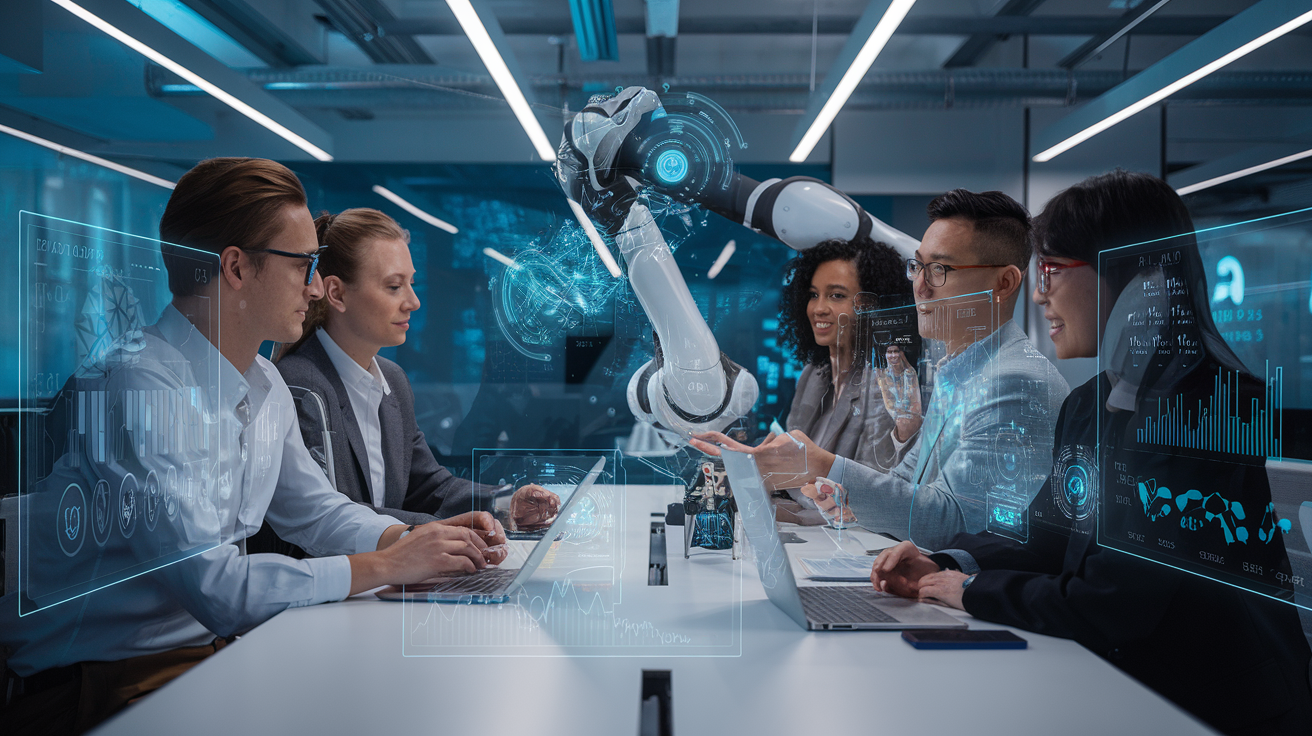
Essential AI skills for future-proofing your career
As I look ahead to 2025, I can’t stress enough how crucial it is to develop AI-related skills. To stay competitive, I’ve identified key areas where I’m focusing my efforts:
- Data literacy
- Machine learning basics
- AI ethics and governance
- Human-AI collaboration
Here’s a breakdown of these skills and their importance:
| Skill | Importance | Application |
|---|---|---|
| Data literacy | High | Understanding and interpreting AI outputs |
| Machine learning basics | Medium | Grasping AI capabilities and limitations |
| AI ethics and governance | High | Ensuring responsible AI use |
| Human-AI collaboration | Critical | Maximizing productivity with AI tools |
Identifying AI-resistant job roles and sectors
While AI is transforming many industries, I’ve noticed that certain roles and sectors are less likely to be fully automated. I’m keeping an eye on these areas:
- Creative fields (art, music, writing)
- Complex problem-solving roles
- Emotional intelligence-driven positions
- Specialized trades
Leveraging AI tools to enhance productivity
I’ve found that embracing AI tools can significantly boost my productivity. Here are some ways I’m using AI in my daily work:
- Automated data analysis
- AI-powered writing assistance
- Smart scheduling and task management
- Personalized learning recommendations
Continuous learning and upskilling in the AI era
To stay ahead, I’m committed to ongoing learning. I’ve adopted these strategies:
- Enrolling in online AI and data science courses
- Participating in AI hackathons and challenges
- Following AI thought leaders and industry trends
- Experimenting with new AI tools and applications
By staying curious and adaptable, I’m confident in my ability to thrive in the AI-driven future of 2025 and beyond.
AI-Driven Business Transformation
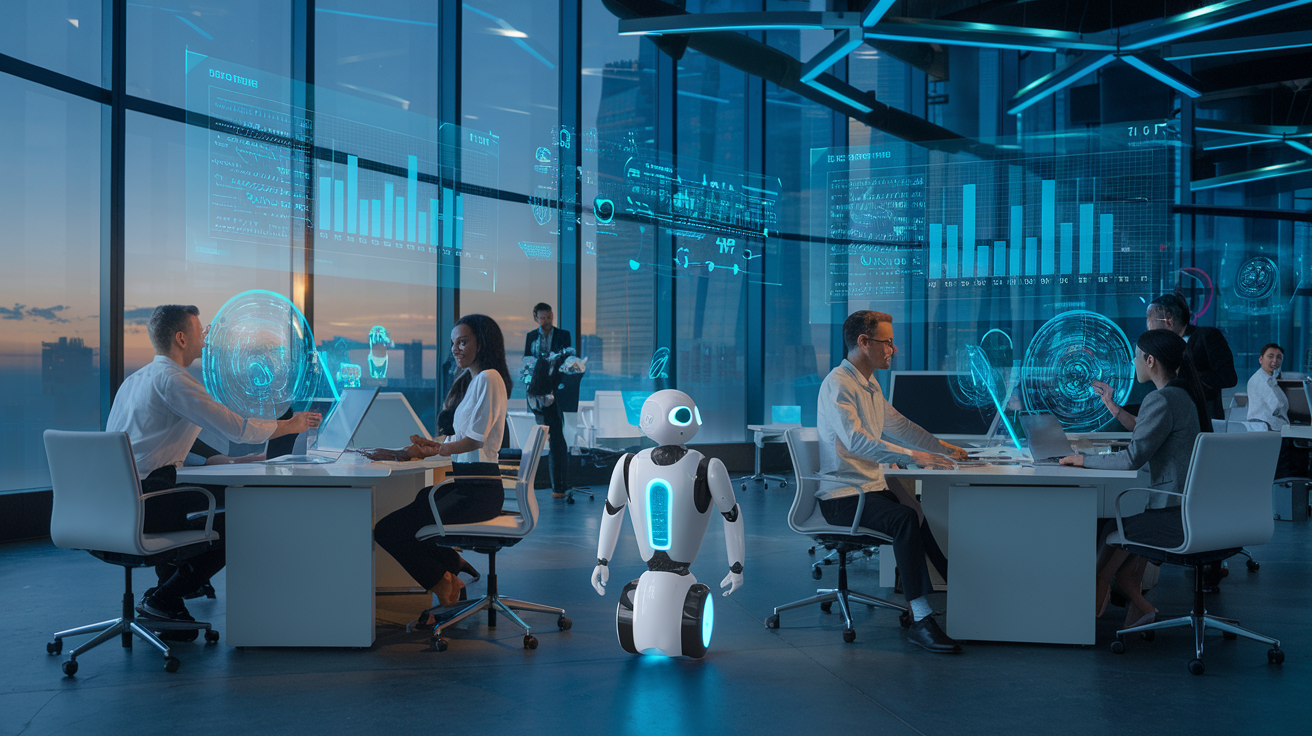
Reimagining business models with AI integration
The study of AI-driven business transformation reveals to me daily the transformative power of AI which reshapes entire industries. I have witnessed companies transform their business models through the power of AI implementation. AI creates substantial impact across multiple key business areas.
| Business Area | AI Integration | Benefits |
|---|---|---|
| Customer Service | Chatbots & Virtual Assistants | 24/7 support, personalized interactions |
| Product Development | Predictive Analysis | Faster time-to-market, targeted innovations |
| Supply Chain | AI-powered Logistics | Optimized inventory, reduced costs |
| Marketing | AI-driven Campaigns | Personalized messaging, improved ROI |
AI-powered decision-making and predictive analytics
In my experience, AI-powered decision-making and predictive analytics are game-changers. I’ve implemented these tools in various businesses, and the results have been astounding. Here’s how I’ve seen AI transform decision-making processes:
- Real-time data analysis for immediate insights
- Accurate forecasting of market trends
- Risk assessment and mitigation strategies
- Customer behavior prediction for targeted offerings
Automating processes for increased efficiency
I’ve witnessed how automation driven by AI can significantly boost efficiency across organizations. Some key areas where I’ve successfully implemented AI-driven automation include:
- Financial processes (invoicing, payroll)
- Human resources (recruitment, onboarding)
- Manufacturing (quality control, predictive maintenance)
- Customer support (ticket routing, FAQ responses)
Ethical considerations in AI implementation
As I continue to advocate for AI adoption, I always emphasize the importance of ethical considerations. It’s crucial to address potential biases in AI algorithms and ensure data privacy. I recommend establishing clear guidelines for AI use and regularly auditing AI systems for fairness and transparency. Next, we’ll explore the challenges businesses face when adopting AI and how to overcome them.
Navigating the Challenges of AI Adoption
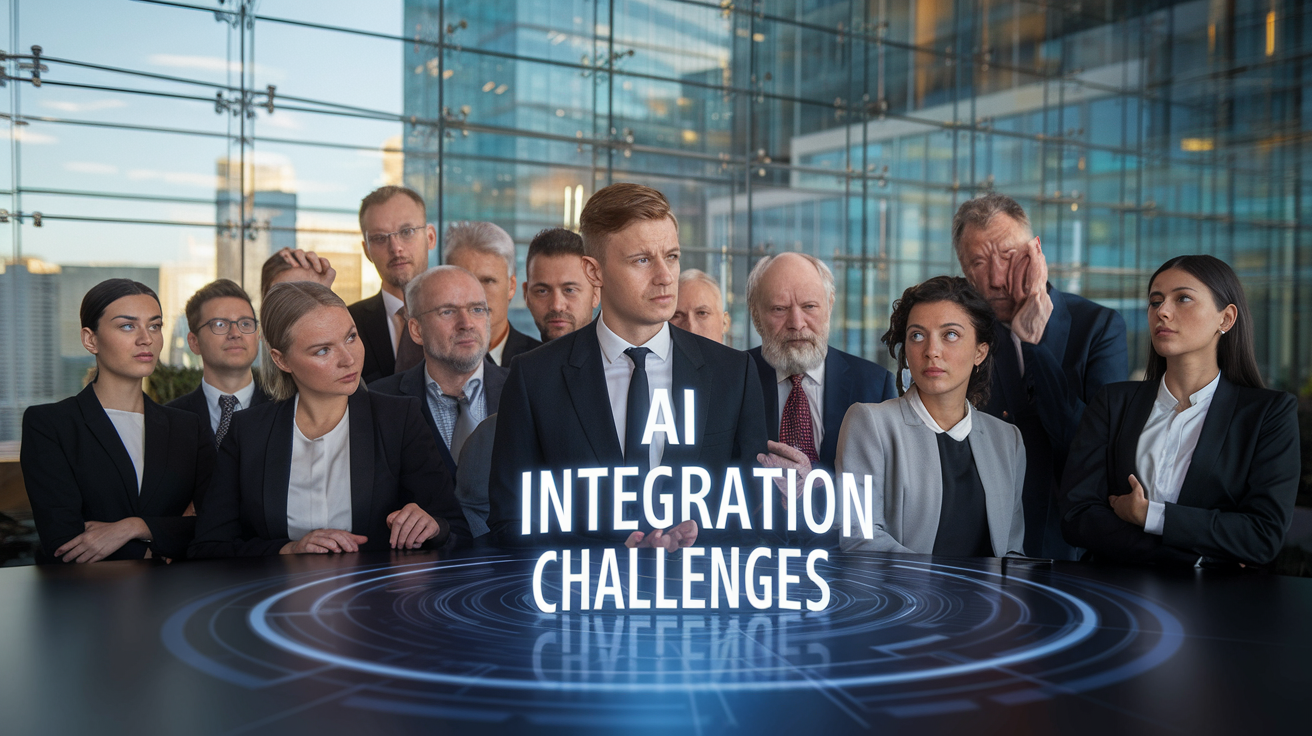
Addressing AI bias and fairness issues
When it comes to AI adoption, I’ve found that bias and fairness are critical challenges we must tackle head-on. I’ve seen firsthand how AI systems can perpetuate existing biases or create new ones if not carefully designed and monitored.
To address this, I recommend:
- Diverse data collection
- Regular bias audits
- Ethical AI framework implementation
- Transparent AI decision-making processes
Here’s a quick comparison of biased vs. fair AI outcomes:
| Aspect | Biased AI | Fair AI |
|---|---|---|
| Data | Limited, skewed | Diverse, representative |
| Algorithms | Black box | Transparent, explainable |
| Outcomes | Discriminatory | Equitable |
| Monitoring | Infrequent | Continuous |
Ensuring data privacy and security
As I delve deeper into AI adoption, I can’t stress enough the importance of data privacy and security. With AI systems processing vast amounts of sensitive information, protecting this data is paramount.
I’ve implemented several strategies to safeguard data:
- End-to-end encryption
- Regular security audits
- Strict access controls
- Data anonymization techniques
Managing the human-AI collaboration
In my experience, successful AI adoption hinges on effective human-AI collaboration. I’ve found that it’s not about replacing humans, but augmenting their capabilities. To achieve this, I focus on:
- Clear role definition
- Continuous training and upskilling
- Open communication channels
- Regular performance evaluations
Overcoming resistance to AI-driven change
Lastly, I’ve encountered resistance to AI-driven change in various organizations. To overcome this, I’ve developed a multi-pronged approach:
- Transparent communication about AI benefits and limitations
- Inclusive decision-making processes
- Gradual implementation with measurable milestones
- Showcasing early wins and success stories
As we move forward, it’s crucial to remember that these challenges are interconnected. Addressing them holistically will pave the way for successful AI adoption and integration into our personal and professional lives.
The Human Edge in an AI-Dominated World
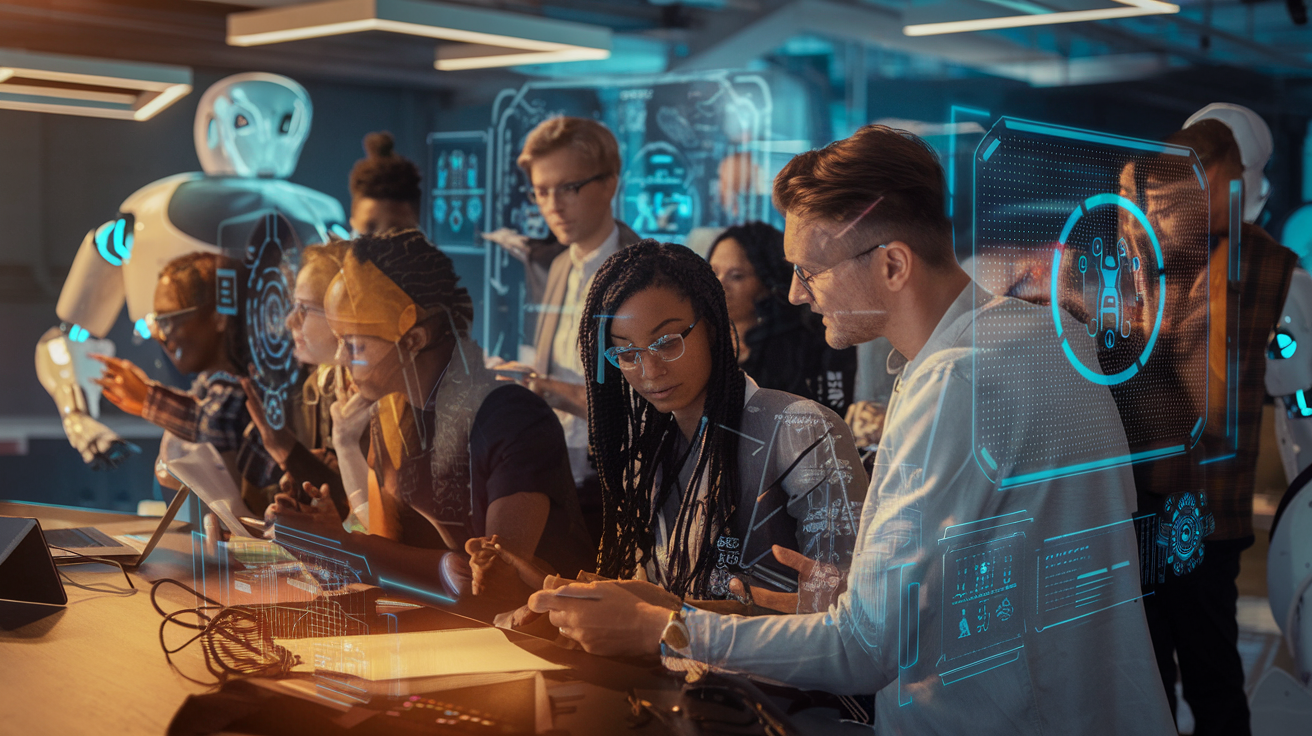
Cultivating uniquely human skills and creativity
In a world increasingly dominated by AI, I’ve found that nurturing our uniquely human skills is more crucial than ever. Creativity, for instance, remains a realm where we can truly shine. While AI can generate content, it’s our human touch that brings depth, emotion, and originality to creative endeavors.
Here’s a list of human skills I believe are irreplaceable:
- Empathy
- Intuition
- Imagination
- Adaptability
- Curiosity
Emotional intelligence and interpersonal relationships
I’ve observed that emotional intelligence (EQ) is becoming a key differentiator in the AI era. Our ability to understand, manage, and express emotions effectively sets us apart from machines. In my experience, strong interpersonal relationships built on trust and empathy are invaluable in both personal and professional spheres.
| Aspect of EQ | Human Advantage | AI Limitation |
|---|---|---|
| Empathy | Genuine understanding | Simulated responses |
| Intuition | Gut feelings based on experience | Lacks instinctive judgment |
| Adaptability | Flexible emotional responses | Programmed reactions |
Critical thinking and complex problem-solving
AI demonstrates superior performance in data processing and pattern recognition but human critical thinking stands unmatched. Human critical thinking stands essential because we excel at analyzing situations through multiple perspectives while considering ethical implications and making nuanced judgments. The solution of complex problems demands both logical reasoning and creative thinking abilities which humans possess uniquely.
Ethical leadership in the age of AI
The increasing prevalence of AI has led me to understand how ethical leadership becomes more vital. The responsibility to develop AI responsibly rests with us. The evaluation of moral philosophy alongside societal impacts and long-term consequences demands human judgment which cannot be replaced by any technology. The human edge in an AI-dominated world has now become evident because our distinct abilities will remain essential for the future. The future will achieve its best potential when humans and AI systems work together through their combined strengths.

AI will transform both our personal lives and professional environments at a fast pace during the next decade of 2025. The path to staying relevant requires us to understand AI revolution and adopt growth strategies and learn to manage adoption challenges. The vast opportunities of AI business transformation require us to develop and nurture our distinct human abilities. Our success in an AI-controlled world depends on our capacity to adapt while continuously learning and using our creativity together with emotional intelligence. Our distinct human abilities will enable us to create our own space and maintain our worth in a world that becomes more automated. The goal should be to work alongside AI instead of fighting against it because this partnership enables new discoveries and drives progressive innovation.
